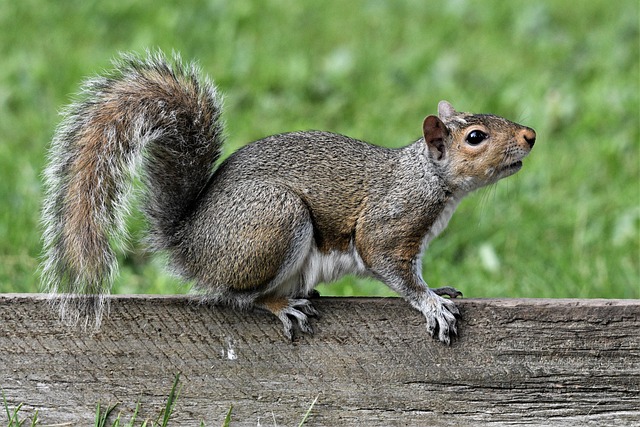Identifying your region's specific squirrel species is the vital first step in effective residential squirrel treatment. North America's diverse squirrel types demand tailored strategies, like distinguishing between Eastern Grey and Red Squirrels. Understanding daily routines, seasonal behaviors, and social structures ensures humane, environmentally responsible practices that minimize disruption to squirrels and residents alike. Management techniques include physical deterrents, encouraging natural predators, and community education to foster peaceful coexistence and mitigate conflicts associated with residential squirrel treatment.
Understanding squirrel behavior is key to effective management, especially in urban and residential settings. This guide delves into the daily routines, seasonal patterns, communication methods, and social interactions of squirrels, providing insights crucial for harmonious coexistence. By recognizing local squirrel species and implementing tailored strategies, homeowners and managers can mitigate human-squirrel conflicts while ensuring the well-being of these versatile creatures. Discover practical residential squirrel treatment approaches that balance conservation and quality of life.
Recognizing Squirrel Species in Your Area
Identifying the specific squirrel species in your region is a key step in effective management. North America, for instance, is home to several squirrel varieties, each with unique behaviors and habitat preferences. Understanding their differences is crucial for choosing appropriate residential squirrel treatment methods. The Eastern Grey Squirrel, common across much of the U.S., is known for its agility and tree-dwelling habits, often requiring strategic trapping or scaring techniques to manage their populations. In contrast, the Red Squirrel, found in the northeastern parts, tends to live in more dense vegetation and store acorns in hidden caches, making them less visible but no less important to control if they become a nuisance.
Knowing your local squirrel species allows for targeted interactions. For example, some methods effective against Grey Squirrels might not be suitable or as impactful on smaller Red Squirrels. This precision approach ensures the safety and well-being of both wildlife and residents, promoting harmonious coexistence. It also encourages environmentally responsible residential squirrel treatment practices.
Daily Routines and Seasonal Behaviors
Squirrels, being creatures of habit, adhere to distinct daily routines that can provide valuable insights for effective residential squirrel treatment. These small mammals are typically most active during dawn and dusk, spending their days foraging for food, grooming, and resting. Understanding these patterns allows property owners and wildlife management professionals to implement strategies that minimize disruption to both the squirrels and residents. For instance, scheduling inspections and control methods during less active periods can ensure a smoother process without endangering these creatures.
Seasonal behaviors further complicate matters as squirrels adapt their routines based on environmental cues. During spring and summer, they prioritize breeding and raising their young, becoming more territorial. In autumn, their focus shifts to storing food for the upcoming winter dormancy. These seasonal variations necessitate tailored approaches in residential squirrel treatment, recognizing that what works during one season might not be effective or desirable in another.
Communication and Social Interactions
Squirrels are highly social creatures, especially within their family units. They primarily communicate through a series of vocalizations, including high-pitched chirps and chatter, which serve as alerts for potential danger or to maintain contact with other group members. These sounds are an essential part of their residential squirrel treatment, helping them establish territories and foster strong bonds.
Social interactions play a crucial role in squirrel behavior, particularly during mating seasons and when raising young. They live in complex social structures, often sharing food resources and providing mutual support for protection against predators. Understanding these communication methods is vital for effective management of squirrel populations in urban areas, ensuring peaceful coexistence with humans while maintaining the health and well-being of these fascinating creatures.
Human-Squirrel Conflict Management Strategies
Human-squirrel conflicts often arise in urban and residential settings, where squirrels have learned to associate human presence with food opportunities. To mitigate these conflicts, several effective management strategies can be employed for residential squirrel treatment. One approach is to implement physical deterrents, such as installing metal meshes or guards on rooftops and beneath decks, to prevent squirrels from accessing food sources. Additionally, securing trash cans with tight-fitting lids can reduce the availability of human-provided food.
Encouraging natural predator presence, such as owls and hawks, can also help deter squirrels. This can be achieved by creating a more diverse and harmonious ecosystem in the vicinity. Planting native trees and shrubs provides habitats for predators and encourages them to stay close, naturally reducing squirrel populations. Community education is another crucial aspect of residential squirrel treatment. Informing residents about squirrel behavior and the importance of not feeding them can significantly reduce conflicts.
Understanding squirrel behavior is key to effective management, especially in residential areas. By recognizing local squirrel species, their daily routines, and seasonal patterns, we can better predict and mitigate potential conflicts. Communal interactions offer insights into their social dynamics, while exploring human-squirrel conflict strategies enables us to implement humane treatment methods tailored to these intelligent creatures. Adopting a comprehensive approach that incorporates these aspects ensures a harmonious coexistence between humans and squirrels in our urban landscapes.
